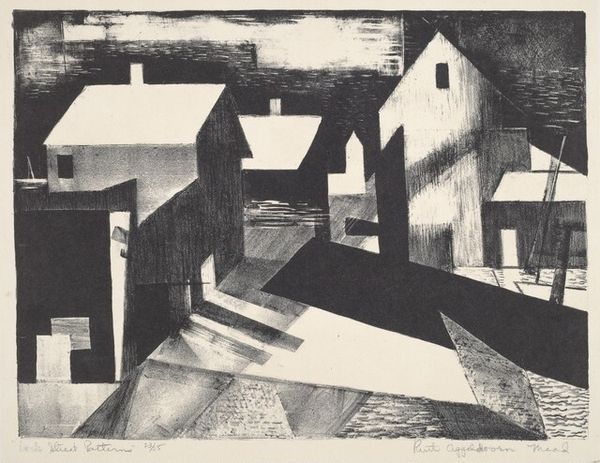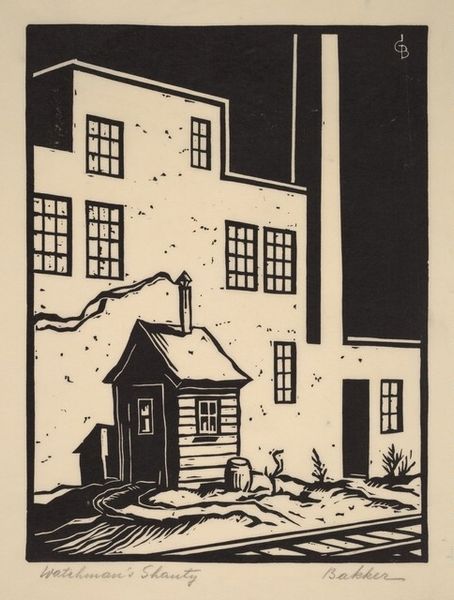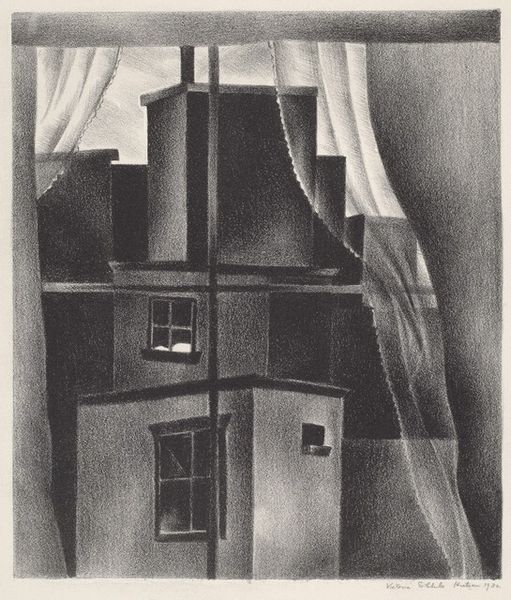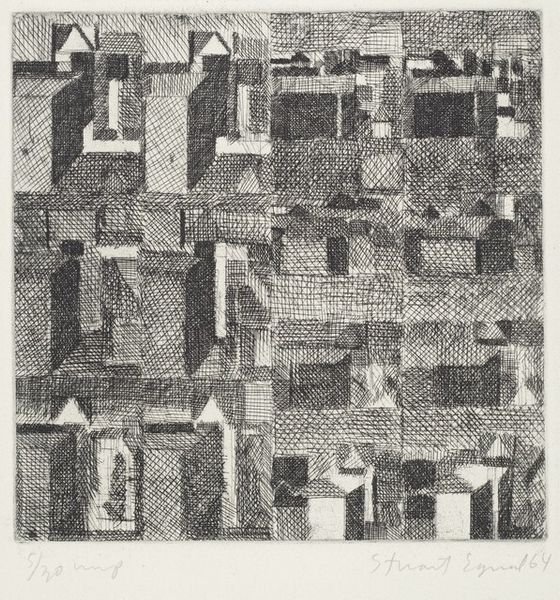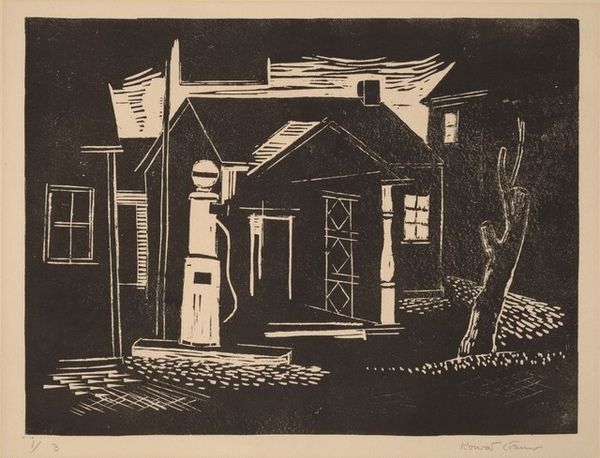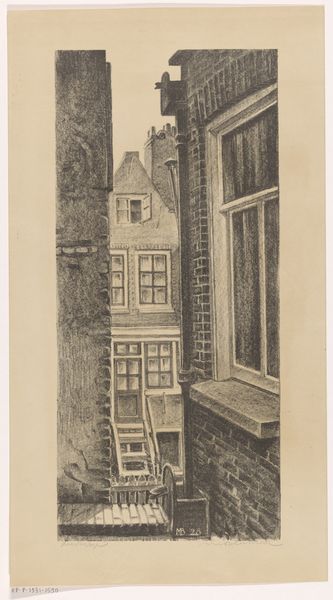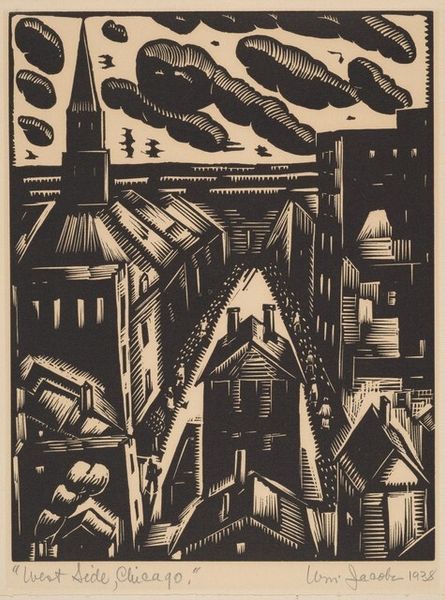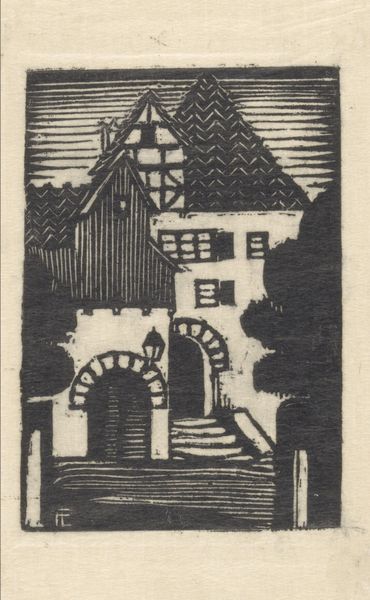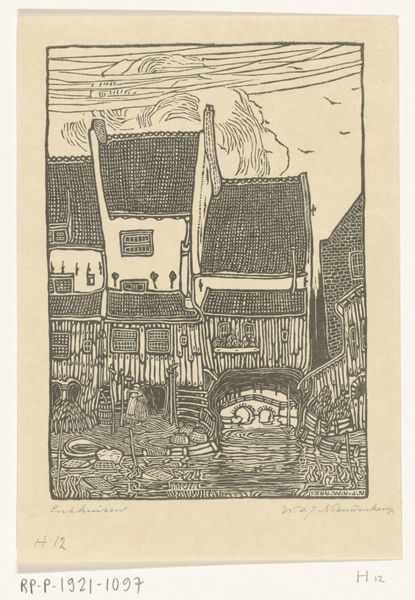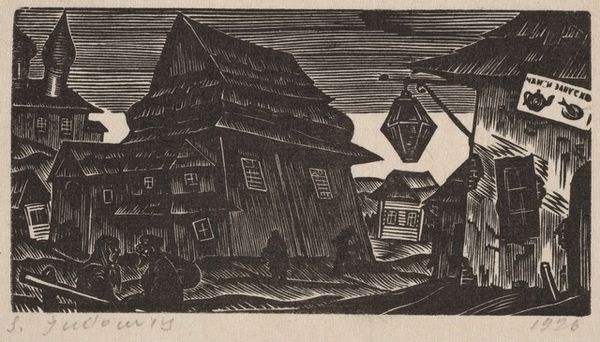
print, etching
# print
#
etching
#
geometric
#
cityscape
#
realism
Dimensions: image: 295 x 225 mm sheet: 406 x 292 mm
Copyright: National Gallery of Art: CC0 1.0
Curator: Before us hangs Julius John Pommer's etching, "Backyard," created sometime between 1935 and 1943. Editor: My initial impression is one of intense geometry; a very studied composition, dominated by rectilinear shapes and tight spatial compression. Curator: Indeed. The artist meticulously renders each roof tile and wooden plank, creating a dense tapestry of textures. The light, too, falls uniformly, accentuating the flatness of the picture plane rather than creating dramatic depth. Consider also how he uses perspective to create an urban environment, the realism is palpable. Editor: And yet, this "realism" is carefully constructed. The image is devoid of human presence, save perhaps for the suggestion of curtains in the windows. The printmaking process itself is critical to understanding Pommer’s vision; the labor invested, the reproducible nature... These buildings, presumably dwellings, are presented as a landscape of production. Were they the subject of urban renewal? What does a backyard signify during this period of social change? Curator: These are crucial points. The emphasis on craft is not merely decorative, it is structural. These geometric forms suggest more than an aesthetic arrangement of shape; the absence you notice emphasizes isolation, which elevates the social and political context of this backyard and creates the perfect aesthetic tension. Editor: Right. I find myself reflecting on the materiality itself. The dense network of etched lines is inherently reproducible, enabling distribution on a broad scale and thus providing insights into the living spaces for consumption by many viewers. The scale too, forces intimacy with mundane architectural subjects. Curator: For me, the brilliance lies in the paradoxical flatness and spatial depth—the etching becomes an object rather than a space. Editor: Ultimately, Pommer prompts a deeper examination of the buildings, not only of aesthetic and thematic context, but also a commentary on mass production, space, and social context.
Comments
No comments
Be the first to comment and join the conversation on the ultimate creative platform.
